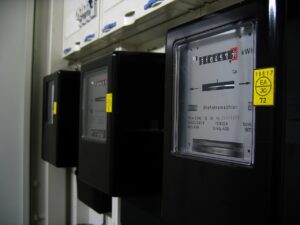
Introduction:
In the quest for sustainable and self-reliant energy solutions, the fusion of solar energy and net metering has emerged as a beacon of empowerment for energy consumers. Net metering, a billing arrangement that allows solar panel owners to feed excess energy back into the grid, is reshaping the landscape of renewable energy adoption. In this blog post, we explore the symbiotic relationship between solar energy and net metering, examining how this dynamic duo is revolutionizing the way we generate, consume, and even monetize clean energy.
Understanding Net Metering:
1. The Basics of Net Metering
Net metering is a billing system that enables solar panel owners to connect their systems to the electrical grid. When the solar panels generate more electricity than is immediately consumed, the excess energy is fed back into the grid. In return, the energy provider credits the solar panel owner for the surplus electricity, effectively spinning the traditional meter backward.
2. Two-Way Energy Flow
One of the key features of net metering is its support for a two-way flow of electricity. Solar panel owners become both consumers and producers, contributing to the grid during periods of excess generation and drawing electricity when their panels are less productive, such as during the night or on cloudy days.
3. Credit Accumulation
Excess energy generated during peak sunlight hours results in the accumulation of credits, which can be used during periods of low solar production, ensuring optimal energy utilization.
4. Economic Incentives
Net metering offers financial incentives by allowing users to offset their electricity bills, providing a tangible return on investment for solar system installations.
The Synergy: Solar Energy and Net Metering
1. Economic Viability
Net metering significantly enhances the economic viability of solar energy systems by providing a mechanism for users to recoup their initial investment through reduced electricity bills and credit accumulation.
2. Grid Support
The integration of solar energy and net metering supports grid stability by smoothing out fluctuations in energy production, contributing to a more reliable and resilient power infrastructure.
3. Environmental Impact
The combined impact of solar energy and net metering extends beyond economic benefits, actively contributing to environmental conservation by promoting clean energy generation and reducing the demand for fossil fuels.
Advantages of Solar Energy and Net Metering:
1. Financial Savings
Net metering allows solar panel owners to offset their electricity bills significantly. By exporting surplus energy to the grid during peak production times and importing electricity when needed, consumers can achieve a balance that results in lower overall energy costs.
2. Monetizing Excess Energy
Beyond cost savings, net metering provides an avenue for consumers to monetize their excess energy. The credits earned for contributing to the grid can be utilized during periods of higher energy consumption or even sold back to the utility company in some regions.
3. Renewable Energy Adoption
Net metering acts as a powerful incentive for the adoption of solar energy. The financial benefits, coupled with the environmental advantages of clean energy production, make solar panels a compelling choice for homeowners, businesses, and communities alike.
4. Reduced Carbon Footprint
Unlike fossil fuels, solar power generates electricity without emitting harmful greenhouse gases, contributing to a substantial reduction in carbon footprints and mitigating climate change.
5. Energy Independence
Solar installations empower individuals, businesses, and communities to become more energy independent, reducing reliance on centralized power grids and fossil fuel-dependent sources.
Challenges and Considerations:
1. Policy Variability
The success of net metering often hinges on supportive policies. Variability in net metering regulations across regions can impact the economic viability of solar installations. Advocacy for consistent and favorable policies remains crucial for widespread adoption.
2. Grid Stability
As the number of solar installations grows, maintaining grid stability becomes a consideration. Proper grid management and smart technology integration are vital to ensure the seamless incorporation of solar energy into the existing infrastructure.
Real-world Applications:
1. Residential Net Metering Success Stories
Explore case studies of homeowners who have embraced solar energy and net metering, showcasing the financial savings, environmental impact, and overall satisfaction derived from this sustainable energy model.
2. Commercial and Community Initiatives
Examine how businesses and communities are leveraging net metering to reduce operational costs, meet sustainability goals, and contribute to the broader transition to clean energy.
The Future of Solar Energy and Net Metering:
1. Technological Advancements
Anticipate the role of technological advancements, such as smart grids and advanced metering systems, in enhancing the efficiency and reliability of net metering arrangements.
2. Policy Advocacy and Future Trends
Discuss the importance of ongoing policy advocacy for net metering, and explore emerging trends that may shape the future of this symbiotic relationship between solar energy and grid connectivity.
Conclusion:
The integration of solar energy with net metering represents a transformative shift in the way we produce and consume electricity. As technology, policy, and consumer awareness continue to evolve, the potential for net metering to drive widespread adoption of solar energy remains significant. This dynamic partnership is not just reshaping our energy landscape; it is empowering individuals and communities to take control of their energy destiny, fostering a more sustainable and resilient future.
